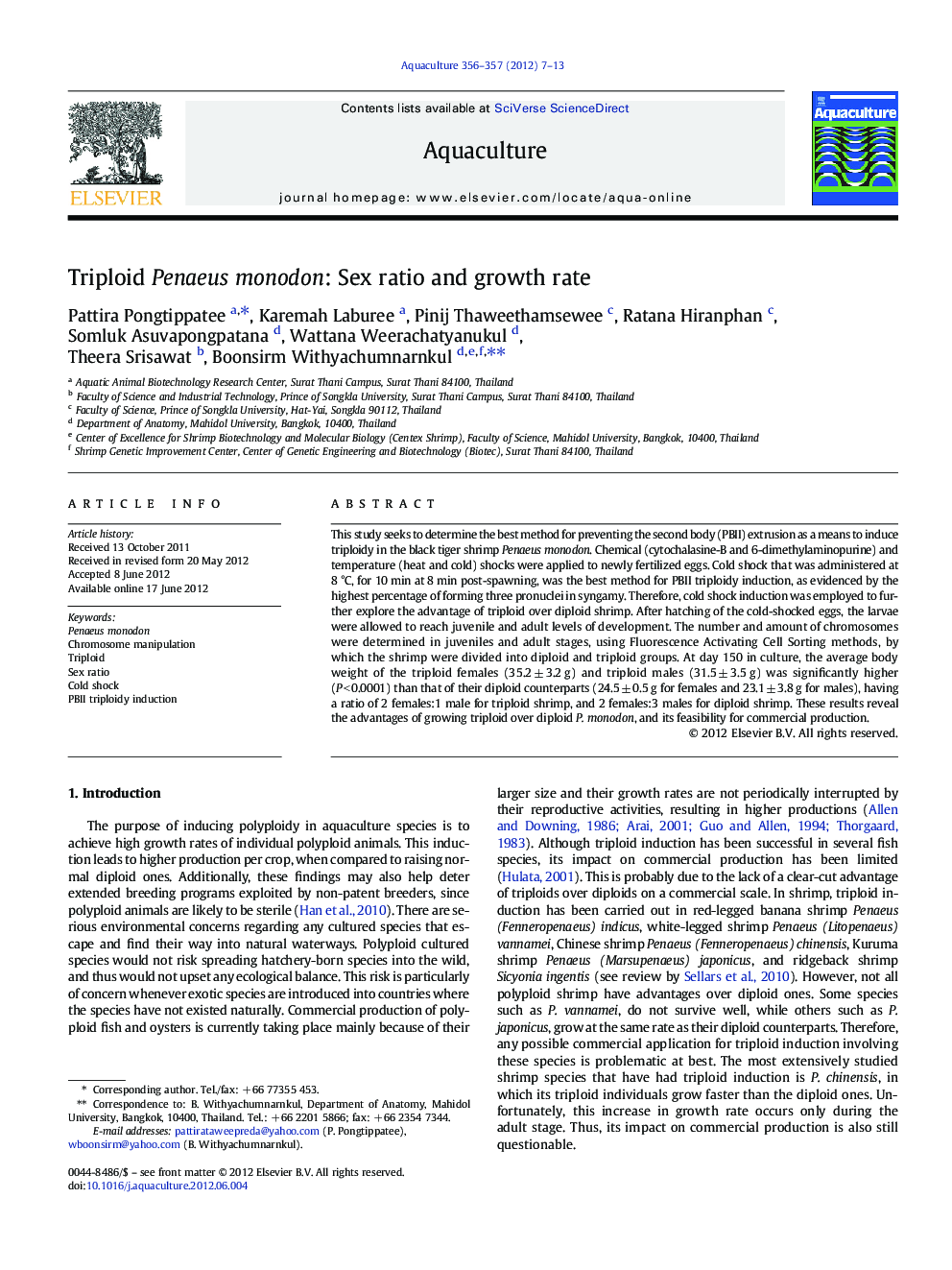| Article ID | Journal | Published Year | Pages | File Type |
|---|---|---|---|---|
| 2422541 | Aquaculture | 2012 | 7 Pages |
This study seeks to determine the best method for preventing the second body (PBII) extrusion as a means to induce triploidy in the black tiger shrimp Penaeus monodon. Chemical (cytochalasine-B and 6-dimethylaminopurine) and temperature (heat and cold) shocks were applied to newly fertilized eggs. Cold shock that was administered at 8 °C, for 10 min at 8 min post-spawning, was the best method for PBII triploidy induction, as evidenced by the highest percentage of forming three pronuclei in syngamy. Therefore, cold shock induction was employed to further explore the advantage of triploid over diploid shrimp. After hatching of the cold-shocked eggs, the larvae were allowed to reach juvenile and adult levels of development. The number and amount of chromosomes were determined in juveniles and adult stages, using Fluorescence Activating Cell Sorting methods, by which the shrimp were divided into diploid and triploid groups. At day 150 in culture, the average body weight of the triploid females (35.2 ± 3.2 g) and triploid males (31.5 ± 3.5 g) was significantly higher (P < 0.0001) than that of their diploid counterparts (24.5 ± 0.5 g for females and 23.1 ± 3.8 g for males), having a ratio of 2 females:1 male for triploid shrimp, and 2 females:3 males for diploid shrimp. These results reveal the advantages of growing triploid over diploid P. monodon, and its feasibility for commercial production.
► The best method for triploid induction of Penaeus monodon was cold shock. ► Triploid P. monodon could be cultured from larvae, juvenile, and finally to adult stages. ► Triploid P. monodon grew faster than the diploid ones. ► Sex ratio of the triploid P. monodon was found to be 2 females:1 male. ► Production of triploid P. monodon is commercially feasible.
